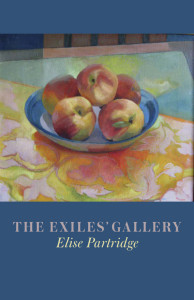A Better Place on Earth:
The Search for Fairness in Super Unequal British Columbia
By Andrew MacLeod
Harbour Publishing
256 pages; $22.95
Reviewed by Erin Anderson
In A Better Place on Earth: The Search for Fairness in Super Unequal British Columbia, journalist Andrew MacLeod presents a case for our province as one with the greatest divide between rich and poor, a divide that has grown because of the policies of our government over the past several years.
MacLeod makes a strong argument for why B.C. is in last place in Canada in terms of inequality, dismantling both the fallacy that creating jobs and strengthening our economy can solve our poverty problem and the idea that inequality is a natural occurrence, based on hard work and talent, rather than something created through policy and privilege.
He also presents our situation in B.C. within the context of inequality as a global issue, one that even business leaders and economists are beginning to warn us about. MacLeod draws on several recent books on uneven wealth distribution, including The Price of Inequality. He quotes its author Joseph Stiglitz as saying that inequality is fuelled by the government, “both what the government does and what it does not do.”
Though our government is taken to task for skewing success rates and dodging questions with rhetoric, MacLeod stays relatively nonpartisan, pointing out that no singular party or politician holds all the responsibility for our current situation. While the B.C. Liberals under Christy Clark do not come off particularly well, federal NDP head Tom Mulcair is also scrutinized for not supporting an inheritance tax, despite the success of and benefit to such a policy in the United States.
In laying out the case for existing inequality, McLeod is thorough to the point of redundancy. Using reports and data from as late as 2014, he looks at not only how we track and measure poverty but how inequality plays out in a range of contexts, from a person unable to pay for prescription medicine to an underfed child in one of the 50 per cent of one-parent homes living in poverty.
Inequality hits those with the least wealth the hardest, MacLeod points out, but it also has longterm effects: unchecked disparity would likely weaken if not collapse our economy as we know it.
The economy may not tug on many people’s heartstrings, but MacLeod seems determined within the pages of A Better Place on Earth to make his appeal for change reach as broad an audience as possible. He compiles shocking statistics and quotes from experts but even as his personal view becomes apparent in the way such facts and experiences are strung together, he maintains a detachment and impartiality.
It’s admirable that MacLeod has produced a book tackling a traditionally leftist topic – inequality and poverty – that doesn’t immediately alienate or offend those whose politics may not overlap. However, the book’s even keel approach leaves it reading more like a series of editorial pieces than a compelling non-fiction read. A Better Place on Earth lacks the fire to act as a rallying cry for supporters and the transparency of its objective makes it an unlikely choice for anyone unaware of or unconvinced by the evidence of inequality around us.
Beyond the statistics, MacLeod includes snippets from people living close to the poverty line: people on welfare, disability or minimum wage. A fair number of these inside sources comment anonymously out of fear of retribution, to the discredit of our social services and to the detriment of the book itself. Acknowledging his own inherent advantages, MacLeod speaks to people whose lives are most impacted today by policies that he believes will damage our future and, in doing so, some explanation for why those most in need and most affected by government have lost faith in politics.
Crucially, MacLeod devotes the final third of his book to solutions to these issues, noting that some policy changes wouldn’t cost the government a dime (important, as a lack of funds is often cited as a reason changes can’t be made) and others would pay for themselves with savings in emergency care, health, economy and more income-earning (and thus tax-paying) citizens.
While we all have an obligation to combat inequality, our government carries the most weight in that fight. To create a government willing to change the status quo, MacLeod argues we need to accept a certain amount of ideological compromise and to stay active and involved even when the results don’t go our way.
The information contained in A Better Place on Earth is both alarming and important and MacLeod deserves commendation for his diligence in pulling together all the facts and arguments we need to begin addressing a very real and serious issue. While his argument is compelling, this book might have a larger impact if it had a less impassive voice to make it a more engaging, persuasive read.
Erin Anderson is a marketing and communications professional who reviews books, music and theatre in her spare time.

